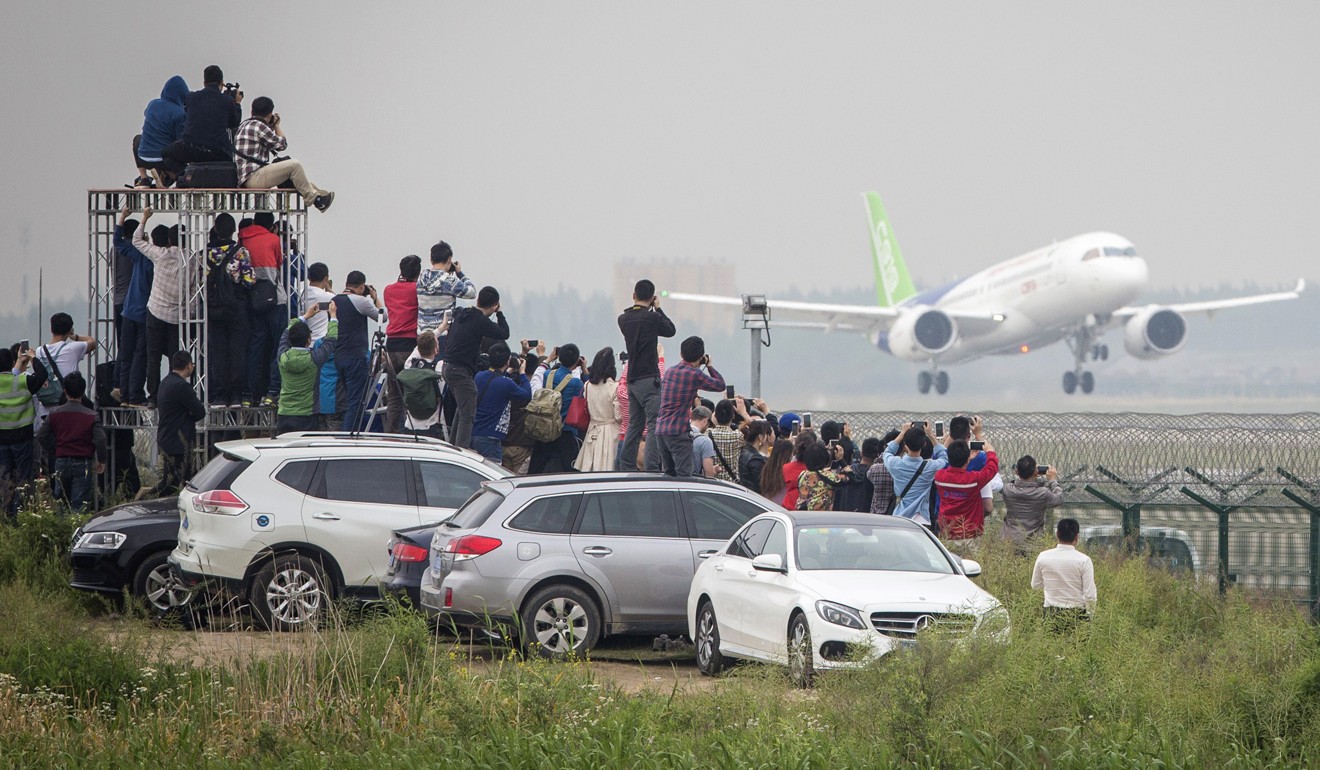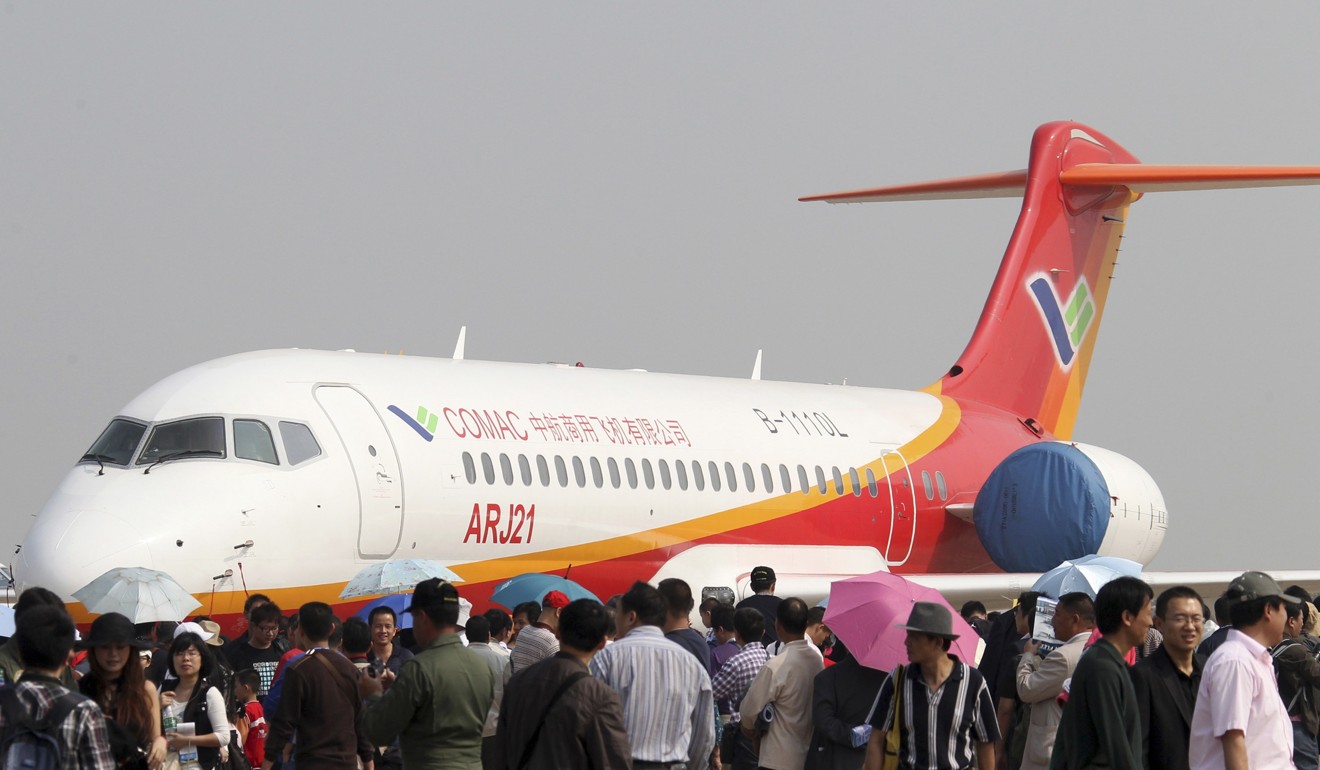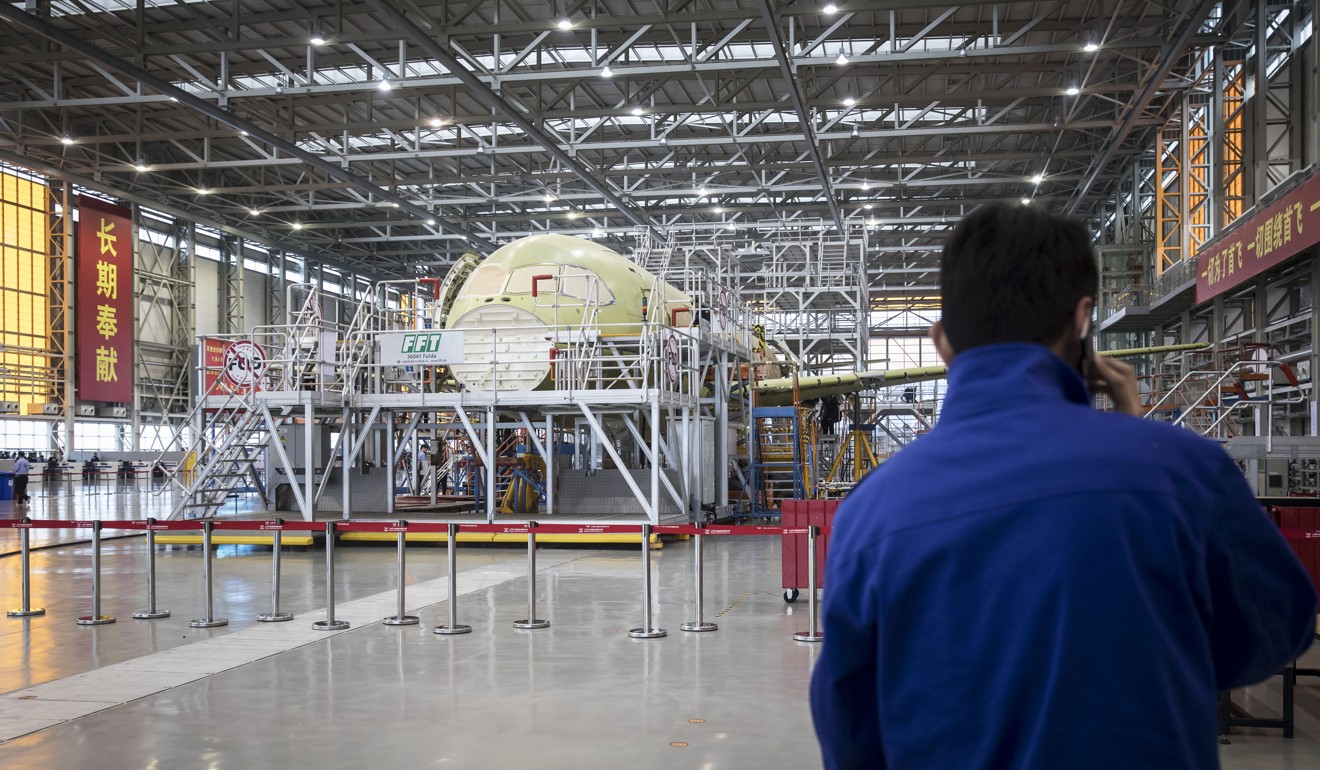
No take-off imminent for China’s aircraft sector, panel discussion in Washington told
Foreign companies provide crucial systems to the state-owned Commercial Aircraft Corporation of China, whose planes cannot yet compete with industry giants Boeing and Airbus
Aviation industry experts have cast doubt on China’s ambitions of developing an indigenous aircraft sector to rival industry behemoths Boeing and Airbus, at a time when the country is actively seeking to nativise technological industries in the face of an escalating trade war with the United States.
Foreign aerospace companies provide many of the crucial avionics and engine systems for state-owned Commercial Aircraft Corporation of China’s (Comac) delay ridden C919 airliner, which is currently under development. In a sign that Comac is seeking to remedy this reliance, the company is pursuing the development of Chinese built turbofans to replace the aircraft’s foreign built engines.
Sino-Russian widebody jet to use self-developed engines
But accelerating the development of Chinese designed engines was not a realistic prospect, said Douglas Harned, managing director and global aerospace specialist at investment research company Bernstein. “The engine and the avionics – those are the most difficult things to do.”
Speaking on the sidelines of a panel discussion on China’s aircraft industry at the Washington-based Center for Strategic and International Studies, Harned said on Thursday that Comac would be “lucky” to “deliver 20 aeroplanes by 2025 or so”, which would pale in comparison to the more than 150 units Boeing and Airbus supply to the Chinese market each year.
There have certainly been significant breakthroughs in China’s home-grown aircraft industry in recent years. Comac’s ARJ21, China’s first domestically produced regional jet, went into service in 2016, while its larger, narrow body C919 successfully completed a maiden flight last year.
If you’re late, Boeing and Airbus aren’t standing still. They will continue to progress
But, despite these milestones, expectations of international competitiveness have been somewhat dampened by a relatively inactive usage cycle of the ARJ21 by its sole operator, Chengdu Airlines, and a testing process for the C919 that has been plagued by delays.
Neither the ARJ21 nor the C919 have yet received Federal Aviation Administration certification, a prerequisite for access to the US market.
Comac’s former chief integration officer, Susan Ying, said on Thursday the state-owned company’s ability to innovate was hampered in part by the relative youth of its workforce.
“First of all, it’s lack of experience,” she told the South China Morning Post. “They’re not utilising all the foreign experts and people who do have the experience. So that’s got to change.”
Ying spent two decades at Boeing before working at Comac between 2014 and 2018, and is now vice-president of Los Angeles-based electric aircraft start-up Ampaire.
There was a real desire at Comac to modify its business practices. “But as we all well know, in big companies change is hard … change is slow,” she said.
Speed has certainly been an issue in the development of the corporation’s C919, which is not expected to enter operation until 2021, six years behind its original delivery date of 2015 and 13 years since the project began. Speaking during Thursday’s panel discussion, Harned said falling behind was a “disaster” when it came to aircraft development.

“They’re already way behind on the C919,” he said. “If you’re late, Boeing and Airbus aren’t standing still. They will continue to progress.
“You may get your aeroplane out five years late,” he said, only to find that what you thought on paper was competitive is no longer competitive.
Further questions about the readiness of China’s aircraft industry to compete in the international market were raised this week when a Chinese intelligence officer was extradited to the US from Belgium on charges of economic espionage.
China’s answer to Airbus, Boeing completes Shanghai maiden flight
Xu Yanjun, an officer at the Chinese Ministry of State Security, stands accused of overseeing the theft of trade secrets from aviation companies including GE Aviation, which has already partnered with Comac, and is providing many of the C919’s crucial avionic components, including its flight recorder and flight management system.
GE also forms one half of the partnership – with French company Safran Aircraft Engines – that provides the aircraft’s CFM International LEAP turbofan engines.
That an intelligence officer would seek to steal trade secrets from a company whose technology was already being used in Comac’s aircraft has perplexed some observers.

“It’s harder to reverse engineer what’s going into the engine than if you can actually steal the intellectual property,” said Harned, adding that companies like GE Aviation providing engines for Chinese projects would ensure that “air gaps”, where information or technology is insulated from those without due clearance, were in place to make reverse engineering difficult.
US Assistant Attorney General for National Security John Demers, who announced the charges against Xu on Tuesday, said the case was an indication of a broader strategy by the Chinese government of “developing China at American expense”.
China’s answer to Airbus, Boeing due to take off on Friday
“We cannot tolerate a nation stealing our firepower and the fruits of our brainpower,” said Demers. “We will not tolerate a nation that reaps what it does not sow.”
A report on China’s trade practices published in March by the United States Trade Representative said China was using joint ventures with foreign aviation companies as “a key mechanism for obtaining the technology needed to support the development of a domestic supply chain for Chinese-made aircraft”.

This report formed the basis of the Trump Administration’s pursuit of a series of ongoing measures against China, including the implementation of tariffs on more than half the value of goods the US imports from China.
So far, however, the aviation sector has largely escaped tariffs. Aircraft are among the about US$20 billion worth of imports from the US upon which Beijing has not levied duties.
Todd Siena, founder and chief executive of Shanghai-based start-up Block Aero Technologies, said on Thursday that further deterioration in the US-China relationship was a “big risk” the aviation sector should consider.
China Eastern Airlines in talks to place order for five of Comac’s home-made C919 aircraft
But Siena, whose company provides blockchain and artificial intelligence technology to organisations along the aerospace supply chain, said there was reason to believe the sector was resilient and had already weathered a number of ups and downs.
“Not even thirty years ago, [China was] operating Blackhawk helicopters we sold to them,” he said. “I’m sure there are a lot of aerospace and defence companies that would love to have those kind of days return.”

